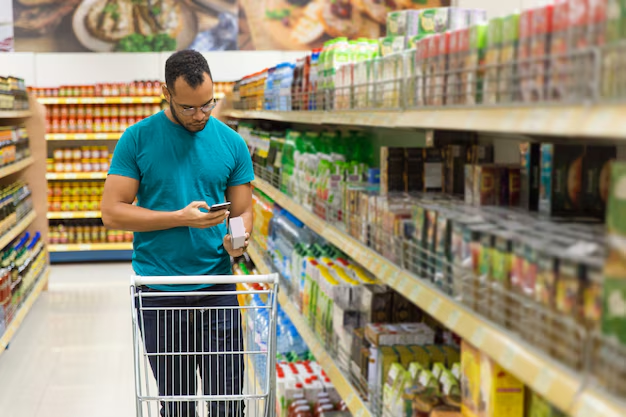
How FMCG Brands are Innovating to Meet Consumer Needs
How FMCG Brands are Innovating to Meet Consumer Needs
The Fast-Moving Consumer Goods (FMCG) sector has always been fast-paced, but in recent years, the industry has been experiencing an unprecedented level of change. Consumer preferences are shifting rapidly, and technology is advancing faster than ever before. To stay relevant and continue to thrive in this dynamic environment, FMCG brands must innovate constantly.
In this blog post, we will explore the various ways FMCG companies are innovating to meet evolving consumer needs, from product development and sustainability efforts to new business models and digital transformation.
1. Sustainability as a Key Driver of Innovation
As environmental concerns grow, consumers are becoming increasingly aware of the impact their purchases have on the planet. This shift in consumer consciousness is pushing FMCG brands to rethink how they source, produce, and package their products.
Sustainable Packaging: One of the most visible innovations is in packaging. Brands are moving away from single-use plastics and adopting eco-friendly alternatives such as biodegradable, recyclable, or compostable packaging. For instance, major FMCG brands like Unilever and Procter & Gamble are focusing on reducing plastic waste, with many rolling out initiatives to make their packaging 100% recyclable by 2025.
Ethical Sourcing: Innovation in sourcing is also on the rise. Brands are looking for ways to source ingredients responsibly, ensuring fair wages for workers and reducing the carbon footprint of their supply chains. Companies like Nestlé and PepsiCo are investing heavily in sustainable agriculture practices to ensure they meet consumer demand for products that align with ethical and environmental values.
2. Health and Wellness-Centric Product Development
With a growing focus on personal well-being, consumers are increasingly choosing products that support a healthy lifestyle. FMCG companies are adapting by innovating to meet the demand for health-focused products.
Functional Foods and Beverages: In response to this demand, FMCG brands are introducing functional foods and beverages that go beyond basic nutrition. These products are formulated to address specific health concerns, such as gut health, immune support, and mental well-being. For example, probiotic-rich foods, fortified drinks, and plant-based protein products are becoming mainstream.
Plant-Based Alternatives: The plant-based movement has seen a surge in recent years, and FMCG brands are jumping on board by expanding their offerings to cater to vegan and vegetarian diets. This includes plant-based dairy alternatives, meat substitutes, and snacks made with plant-based ingredients. Brands like Beyond Meat and Oatly are prime examples of how innovation in this area is transforming the FMCG landscape.
Reduced Sugar and Clean Labeling: Sugar reduction is another area of innovation. Brands are using natural sweeteners and refining their recipes to create products with fewer artificial additives. Clean labeling, where products are free from preservatives, artificial colors, and flavors, is another significant trend. This is all about giving consumers more transparency and healthier choices.
3. Leveraging Technology to Enhance Consumer Experience
Technology is revolutionizing every facet of the FMCG industry, and it is central to how brands are innovating to meet consumer needs.
AI and Data Analytics for Personalization: FMCG brands are increasingly using artificial intelligence (AI) and data analytics to gain insights into consumer behavior and preferences. By analyzing vast amounts of data, companies can personalize offerings, improve customer experiences, and predict trends before they happen. For example, brands are now able to offer personalized beauty products based on individual skin types or recommend snack options tailored to dietary preferences.
Voice Commerce and Virtual Assistants: The rise of voice-activated technology is also influencing how consumers shop. Virtual assistants like Amazon’s Alexa or Google Assistant are becoming common tools for purchasing products, reordering essentials, or even discovering new FMCG items. Brands are developing their own voice commerce strategies, making it easier for consumers to order products with just a voice command.
Augmented Reality (AR) in Shopping: Augmented reality is another technology that FMCG companies are using to enhance the shopping experience. Through AR apps or in-store displays, consumers can visualize how a product works before purchasing it. For example, cosmetic brands are using AR to allow customers to try on makeup virtually, while furniture companies let customers see how items will look in their homes.
4. Subscription-Based Services for Convenience and Loyalty
Consumers are increasingly looking for convenience and reliability in their shopping experiences. FMCG brands are innovating by offering subscription-based services that provide personalized, regular deliveries of products that customers use most often.
Automated Deliveries: Subscription services in categories like personal care, cleaning products, and snacks allow consumers to receive their favorite products delivered directly to their doorstep on a set schedule. This model ensures that consumers never run out of essential items, while also fostering brand loyalty.
Customized Subscriptions: Some FMCG brands have gone a step further by offering customized subscription services. For instance, beauty companies like Birchbox and Dollar Shave Club allow customers to receive curated boxes based on individual preferences, ensuring they get the products they need in a more personalized manner.
5. The Shift to E-Commerce and Direct-to-Consumer (DTC) Models
With the global e-commerce boom, FMCG brands are increasingly turning to direct-to-consumer (DTC) models. This innovation allows companies to sell directly to their customers, bypassing traditional retail channels. By doing so, brands can build closer relationships with consumers and gain valuable data insights.
Online-Only Products and Experiences: Some brands are launching exclusive online-only products or limited edition releases that encourage online shopping. This approach not only drives online sales but also creates a sense of exclusivity and urgency for consumers.
Omnichannel Retail: While e-commerce continues to thrive, traditional brick-and-mortar stores remain an important part of the consumer experience. FMCG brands are developing omnichannel retail strategies that integrate both online and offline shopping. Whether it’s through curbside pickup, buy-online-pick-up-in-store (BOPIS), or interactive digital displays in physical locations, FMCG brands are making shopping more seamless and convenient for consumers.
6. Fostering Brand Loyalty Through Social Engagement
FMCG brands are turning to social media and influencer marketing to build a deeper connection with their audience. By partnering with influencers and running social media campaigns, brands are not only promoting their products but also creating communities of loyal consumers.
User-Generated Content: Consumers want to feel seen and heard by brands. User-generated content (UGC), such as reviews, unboxing videos, and testimonials, has become a powerful tool for FMCG companies. By encouraging customers to share their experiences, brands can build trust and authenticity, which is crucial for long-term loyalty.
Engagement Through Social Responsibility: Brands are also using social media platforms to showcase their commitment to social and environmental causes. By supporting charitable initiatives or promoting sustainability efforts, FMCG companies can attract consumers who share similar values.
7. Collaborations and Cross-Industry Partnerships
FMCG brands are increasingly collaborating with companies from different industries to create innovative new products or services. For example, food companies may partner with tech firms to launch smart kitchen appliances, or beauty brands may team up with wellness companies to create holistic self-care solutions.
These collaborations allow FMCG brands to tap into new customer bases, share resources, and drive innovation across different sectors.
Conclusion
The FMCG industry is in the midst of a profound transformation, and innovation is at the heart of this change. Whether through sustainable practices, technological advancements, personalized products, or new business models, FMCG brands are continuously evolving to meet the ever-changing needs of consumers.
To remain competitive in 2025 and beyond, FMCG companies must keep a keen eye on these trends and embrace innovation at every level. By doing so, they will not only stay ahead of the curve but also build lasting relationships with their consumers, creating value that goes beyond just the products they sell.
